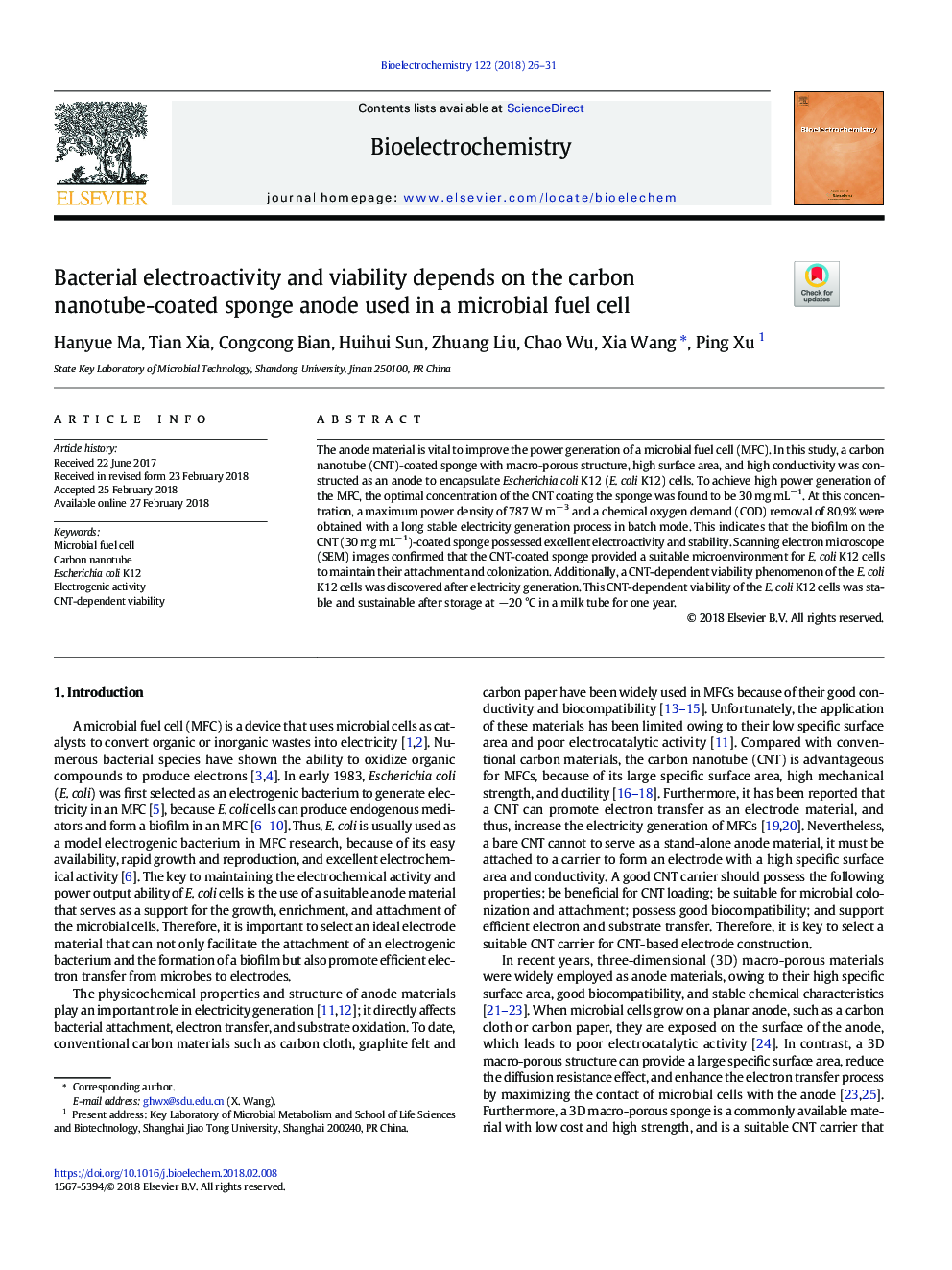| Article ID | Journal | Published Year | Pages | File Type |
|---|---|---|---|---|
| 7704390 | Bioelectrochemistry | 2018 | 6 Pages |
Abstract
The anode material is vital to improve the power generation of a microbial fuel cell (MFC). In this study, a carbon nanotube (CNT)-coated sponge with macro-porous structure, high surface area, and high conductivity was constructed as an anode to encapsulate Escherichia coli K12 (E. coli K12) cells. To achieve high power generation of the MFC, the optimal concentration of the CNT coating the sponge was found to be 30 mg mLâ1. At this concentration, a maximum power density of 787 W mâ3 and a chemical oxygen demand (COD) removal of 80.9% were obtained with a long stable electricity generation process in batch mode. This indicates that the biofilm on the CNT (30 mg mLâ1)-coated sponge possessed excellent electroactivity and stability. Scanning electron microscope (SEM) images confirmed that the CNT-coated sponge provided a suitable microenvironment for E. coli K12 cells to maintain their attachment and colonization. Additionally, a CNT-dependent viability phenomenon of the E. coli K12 cells was discovered after electricity generation. This CNT-dependent viability of the E. coli K12 cells was stable and sustainable after storage at â20 °C in a milk tube for one year.
Related Topics
Physical Sciences and Engineering
Chemistry
Electrochemistry
Authors
Hanyue Ma, Tian Xia, Congcong Bian, Huihui Sun, Zhuang Liu, Chao Wu, Xia Wang, Ping Xu,
